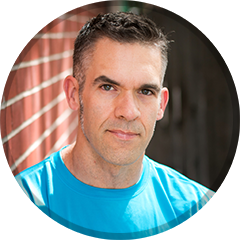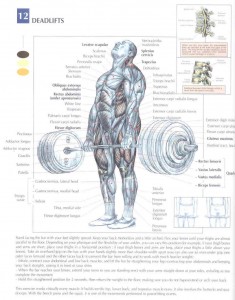Exercise & Relationships
What happens to a relationship when one person exercises a lot and the other doesn’t? The Wall St. Journal offers an analysis of several such situations in A Workout Ate My Marriage. As you might imagine, stress may develop if one partner spends a lot of time training and the other doesn’t.
We see this situation with Caren and Jordan Waxman. Jordan is not only a Merrill Lynch exec with two law degrees and an MBA, he’s also an Ironman triathlete who competes all over the country. His time spent training plus his job requirements means significant time away from his wife and family.
The article quotes a therapist:
“Exercise is getting more and more couples into my office,” says Karen Gail Lewis, a Cincinnati marriage and family therapist.
The article profiles other couples including the strange pairing of an avid marathoner and vegetarian with a sedentary mean-and-potatoes fellow who just recently gave up a two-pack-a-day smoking habit. Lois and Gary Berkowitz occupy opposite ends of the exercise spectrum yet they seem happily married. He accompanies her to races and helps edit a running newsletter. All seems well for them.
(Interestingly, all the athletes profiled are endurance athletes. No weightlifters, powerlifters or bodybuilders appeared in the article. What are their relationships like? Perhaps the much smaller time requirements to get stronger mean happier marriages than the hours and hours required to win marathons and triathlons.)
Lift Weights to Lose Weight
Alwyn Cosgrove and his wife Rachel are both highly successful trainers and owners of Results Gym in California. Alwyn’s blog is full of useful information, and I recommend you have a look at it. One such article is The New Science of Fat Loss. (This first appeared in Men’s Health.) The article discusses the old myth that low-intensity aerobic exercise is the best way to shed fat. New research suggests that weight training burns more calories per unit of time. Researchers put subjects on a reduced-calorie diet and put them in three groups. One group didn’t exercise, another performed aerobic exercise 3 days a week, and a third did both aerobic exercise and weight training 3 days a week. The article states:
“The results: Each group lost nearly the same amount of weight—about 21 pounds per person in 12 weeks. But the lifters shed 5 more pounds of fat than those who didn’t pump iron. The weight they lost was almost pure fat, while the other two groups shed 15 pounds of lard, but also gave up 5-plus pounds of muscle.”
What’s the take-home message? Weight training is a must for physique change! If you’re using plodding, long-duration/low-intensity cardio work as your primary means of weight loss you’re behind the times and you’re wasting time.
My Reading List: The Talent Code, Sports Vision, Motivational Interviewing
If you’re a fitness professional and/or a fitness geek like me, there are three books you’ll want to have a look at. The first is The Talent Code: Greatness Isn’t Born. It’s Made. Here’s How. Daniel Coyle’s book looks at the physiological and psychological components of “talented” and highly successful individuals from athletes to musicians to mathematicians. Three key points discussed in the book are:
• Deep Practice Everyone knows that practice is a key to success. What everyone doesn’t know is that specific kinds of practice can increase skill up to ten times faster than conventional practice.
• Ignition We all need a little motivation to get started. But what separates truly high achievers from the rest of the pack? A higher level of commitment—call it passion—born out of our deepest unconscious desires and triggered by certain primal cues. Understanding how these signals work can help you ignite passion and catalyze skill development.
• Master Coaching What are the secrets of the world’s most effective teachers, trainers, and coaches? Discover the four virtues that enable these “talent whisperers” to fuel passion, inspire deep practice, and bring out the best in their students.
Do you train vision? In the gym? Do you ever think about your eyes when you’re working out. If not, you should. It’s our most vital sense after all. In the Z-Health community, we often discuss vision and the tremendous influence it has on all our bodily processes–including pain, strength and mobility. Sports Vision: Training for Better Performance is required reading for Z-Health trainers. It goes deep into the role our visual system plays in our ability to perform. The book contains many drills designed to improve visual acuity and thus sport performance.
Finally, Motivational Interviewing is considered a must-read by anyone involved in a field such as coaching or personal training. Too often we trainers and coaches focus on the exercise portion of weight loss and athletic performance. We don’t spend enough time figuring out the psychological components of motivation and behavior change. Our role is to motivate clients and athletes to work hard and achieve big goals. Therefore this book is essential to any fitness professional’s library.


